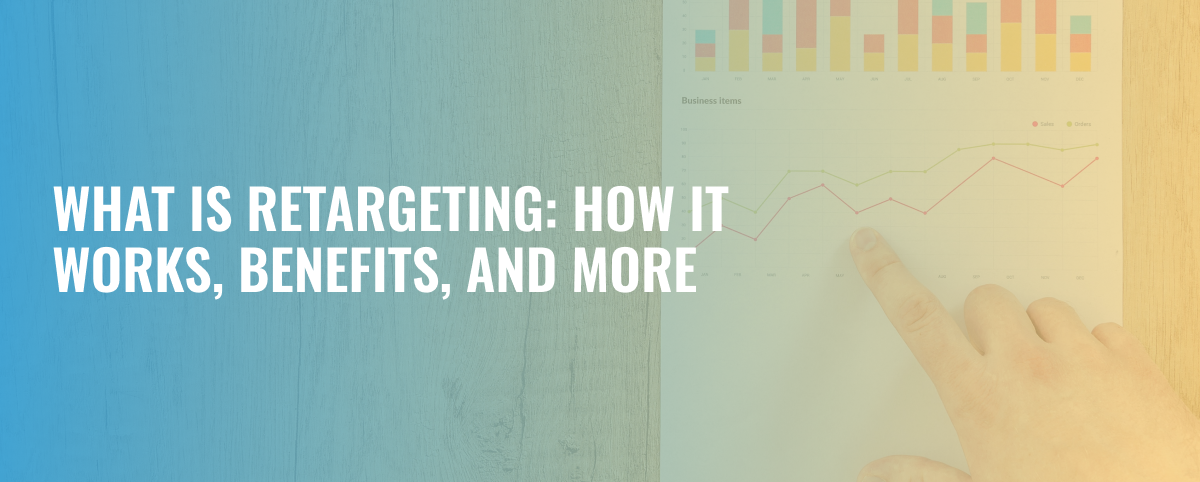8 minute read
What Is Retargeting?
WHAT IS RETARGETING?
Retargeting is a marketing strategy designed to reach potential customers who have previously interacted with a company’s website or social media platforms. It involves serving targeted advertisements to people who have already expressed interest in a product or service in order to drive them back to the website and ultimately increase conversions. This process is based on the use of cookies that track a user’s online behavior and allow companies to create personalized advertisements that are more likely to appeal to their target audience. Retargeting has proven to be an extremely effective tactic for increasing brand visibility and increasing sales.
WHY IS RETARGETING IMPORTANT?
Retargeting is important because it allows businesses to continue engaging with potential customers who have already shown an interest in their brand. By reminding these people of the products or services they were interested in, retargeting can increase the likelihood that they will make a purchase or take the desired action. It’s a cost-effective way to stay in the spotlight and convert potential customers into paying customers.
BENEFITS OF RETARGETING
-
INCREASED CONVERSION RATES
One of the main benefits of retargeting is its ability to increase conversion rates. By targeting users who have already shown interest in a brand or product, retargeting eliminates the need to convince them of the value and importance of the brand. This highly targeted approach often leads to higher click-through and conversion rates, as users are more likely to engage with ads that are relevant to their interests and needs.
-
IMPROVED BRAND RECALL
Retargeting also allows brands to stay in the spotlight of their target audience. By continually displaying ads to users, brands can improve recall and increase brand awareness. This is especially beneficial for new brands or products, as it helps build brand awareness and build trust with potential customers.
-
COST-EFFECTIVENESS
Retargeting not only increases conversion rates and brand recognition, but it also helps brands save money. By targeting users who have already shown interest, retargeting eliminates the need to spend marketing dollars on a broad audience that may not be interested in the brand. This targeted approach can ultimately lead to a higher ROI and a more cost-effective marketing strategy.
-
PERSONALIZED ADVERTISING
Retargeting also allows brands to deliver personalized ads to their target audience. By tracking user behavior and interests, brands can create tailored ads that directly address the needs and desires of their potential customers. This level of personalization can be extremely effective in capturing users’ attention and motivating them to make a purchase.
-
INCREASED ENGAGEMENT
In addition, retargeting allows companies to connect with customers who have shown an interest in their products or services. Retargeting allows brands to keep their brand in the spotlight and increase the chances of converting a potential customer into a paying customer. This targeted approach results in higher engagement rates and a more personalized customer experience, which can lead to higher conversion rates.
-
CROSS-SELL AND UP=SELL OPPORTUNITIES
Retargeting also offers cross-selling and up-selling opportunities. By targeting customers who have already made a purchase, companies can suggest complementary products or services that may interest them. Not only can this strategy increase average order value, but it can also lead to a happier and more loyal customer base.
-
ENHANCED CUSTOMER INSIGHTS
Finally, retargeting can help businesses gain valuable insight into customer behavior and preferences. By tracking interactions and engagement, advertisers can learn more about customer interests and better tailor their marketing efforts to their needs. This information can also help businesses create more effective and targeted campaigns in the future, leading to a better return on investment.
RETARGETING VS REMARKETING
Retargeting and remarketing are two terms that are often used interchangeably, but they are essentially the same. Both strategies target customers who have already interacted with a brand by visiting a website or responding to an ad in order to encourage them to take further action. Retargeting focuses more on using web cookies to track user behavior, while remarketing often involves email marketing and personalized content to reconnect with customers. However, the ultimate goal of both strategies is the same: reconnecting with potential customers and converting them into paying customers. So regardless of the methods used, both retargeting and remarketing aim to bring customers back into the sales funnel.
FINAL WORDS
Retargeting is a powerful marketing tactic that allows businesses to reach potential customers who have previously shown interest in their products or services. Using cookies and tracking pixels, businesses can present targeted ads to potential customers, ultimately increasing the chances of conversion. Retargeting allows businesses to stay in the forefront of consumers’ minds and serves as a reminder of their offerings. Overall, retargeting is a cost-effective and effective way for businesses to reconnect with their audience and increase conversions. When businesses understand this tool and how it works, they can see an increase in customer loyalty and ultimately sales.

